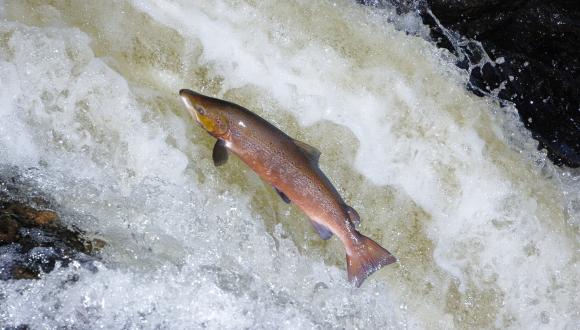Arctic charr
It’s likely that the Arctic charr was the first freshwater fish to colonise Scotland after the last ice age.
Though the species originally came from the sea, all Arctic charr populations in Scotland today remain in freshwater for their entire life cycle.
The Arctic charr (Salvelinus alpinus) is closely related to two other native species: the Atlantic salmon and the brown trout.
Arctic charr is the most northerly freshwater fish. In some northern latitudes, it is the only species in the freshwater fish community.
There are around 50,000 populations of Arctic charr worldwide. Most of these are found in Norway, but the species occurs in lakes and rivers across the northern hemisphere. Europe’s most southerly natural populations are found at altitude in the Rhine and Danube catchments.
In the British Isles, the Arctic charr is mostly found in northern upland areas. Scotland is a stronghold for Arctic charr. Most of our Arctic charr populations occupy standing waters: 258 Scottish lochs are known to contain the species.
Some of Scotland’s Arctic charr populations are occasionally found in rivers. A few populations are known to spawn in streams and rivers of systems that also contain standing waters.
Exploitation of Arctic charr
Scotland has no commercial or subsistence fisheries for Arctic charr and it is only rarely exploited for angling. It is a by-catch of other salmonid species.
Other countries have significant commercial and sport fisheries for Arctic charr.
Threats to Arctic charr
Potential threats to Arctic charr include:
- climate change
- eutrophication (water pollution)
- acidification
- afforestation
- lake engineering
- exploitation
- aquaculture
- non-native species introductions
- introductions of charr of different race, stock or type
Scotland has suffered few extinctions of Arctic charr populations historically. We know of a number of sites were Arctic charr have been lost, and there may be others where populations are on the brink of extinction.
Most of the known extinctions have been in south and central Scotland, with at least five thought to be due to acidification.
Protection of Arctic charr
Arctic charr are a conservation feature in five Sites of Special Scientific Interest:
- Loch Eck
- Insh Marshes
- Loch Builg
- Loch of Girlsta
- Loch Doon
They are also present in a number of lochs protected as Special Areas of Conservation or as National Nature Reserves.
The Arctic charr is a UK Biodiversity Action Plan priority fish species.
Find out more
Read our guidance for planners and developers on protected animals.




